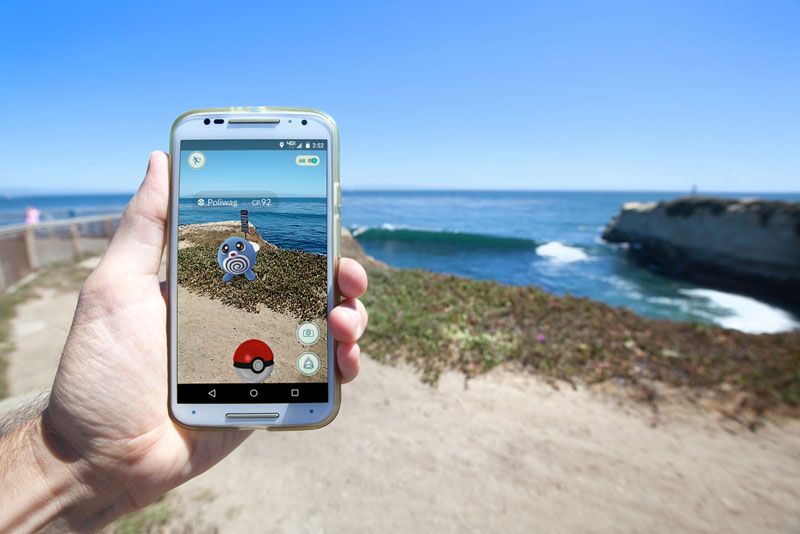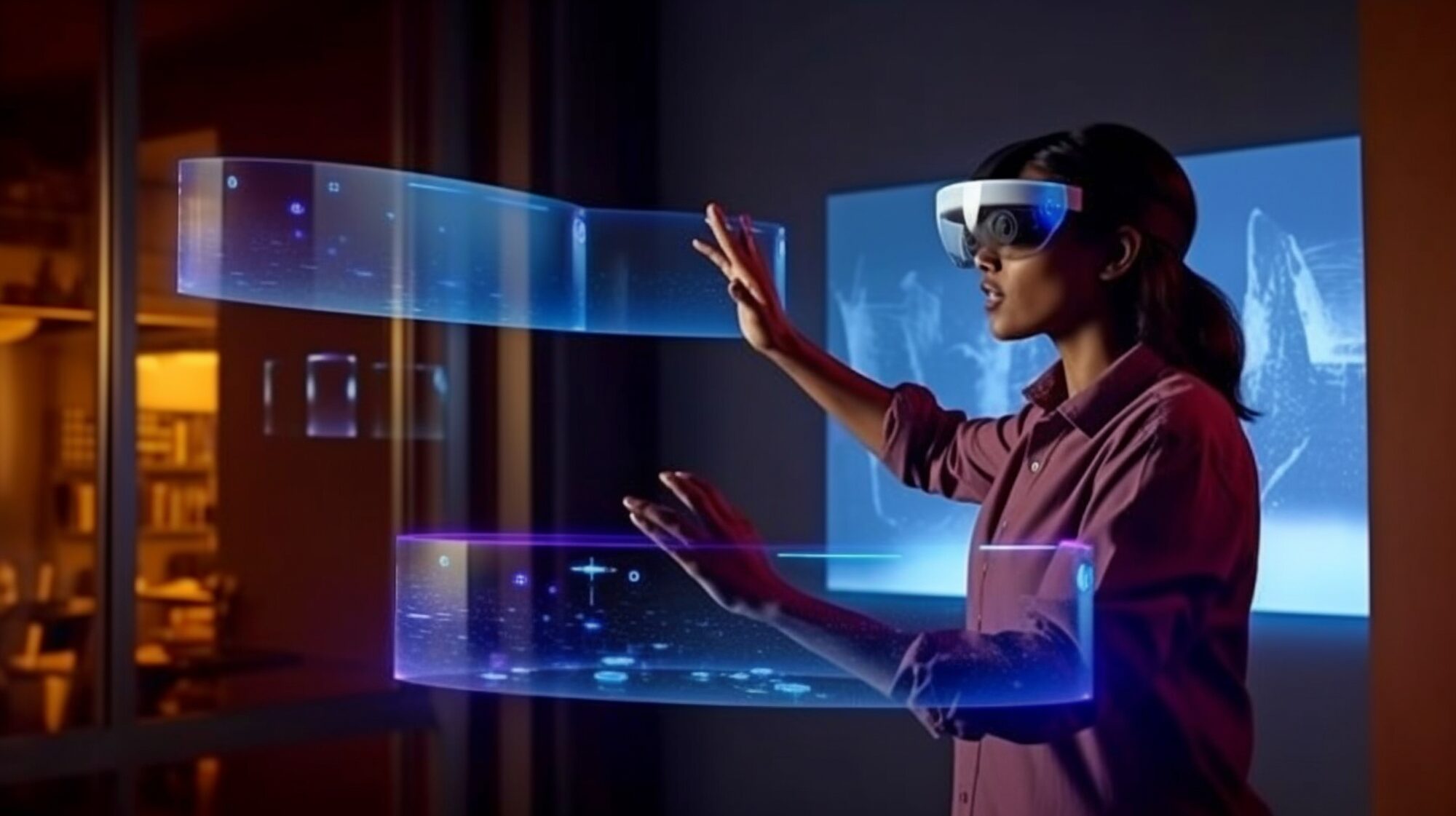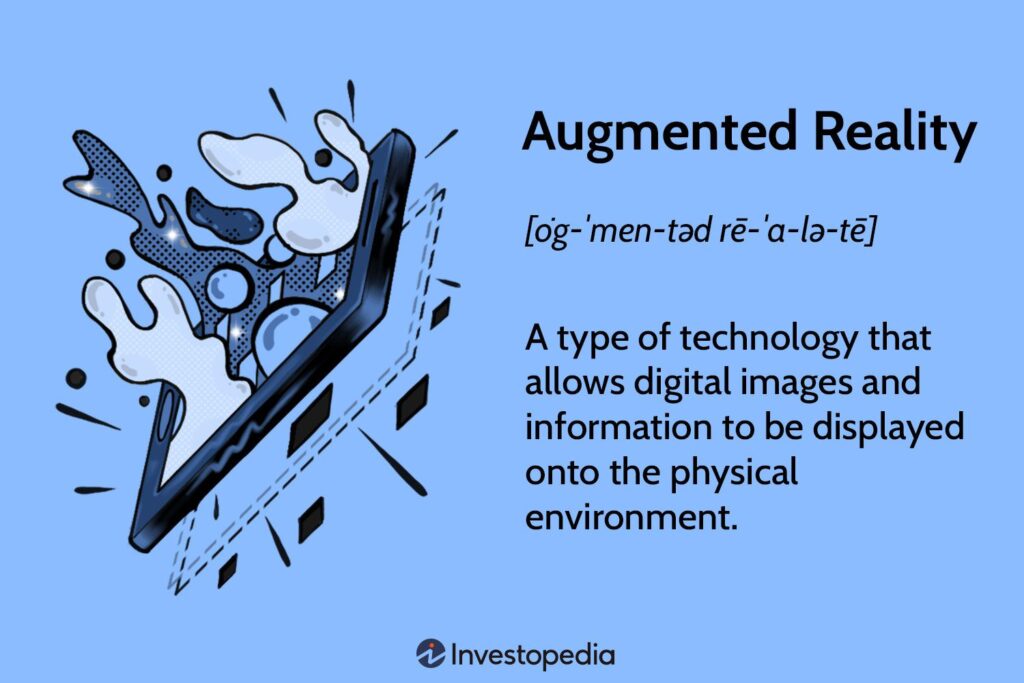Augmented Reality (AR) overlays digital information on the real world using devices like smartphones and AR glasses. It enhances user experiences by blending virtual elements with physical surroundings.
Augmented Reality transforms how we interact with our environment. By integrating digital content with the real world, AR provides immersive experiences. Users can see virtual objects or information superimposed on their physical surroundings. This technology has diverse applications, from gaming and entertainment to education and healthcare.
AR can enhance learning experiences, provide real-time information, and assist in tasks like navigation. Its growing presence in various industries showcases its potential to revolutionize everyday activities. With continuous advancements, AR promises to become even more integrated into our daily lives.

Credit: www.livescience.com
Introduction To Augmented Reality
Augmented Reality (AR) is revolutionizing how we see the world. It blends digital elements with the real world. This exciting technology has various applications. Let’s dive into the basics of AR.
What Is Ar?
Augmented Reality enhances our real-world experiences. It overlays digital content on real-world objects. AR can be experienced through devices like smartphones and AR glasses. For example, you can see a digital map on your phone screen while walking.
AR is different from Virtual Reality (VR). VR creates a completely digital environment. But AR adds digital elements to our real world. This makes AR more accessible and practical.
Brief History
AR has a rich history spanning several decades. It began in the 1960s. Ivan Sutherland created the first AR system, named the “Sword of Damocles.” It was a head-mounted display. This early AR was basic and bulky.
In the 1990s, AR saw significant advancements. Researchers developed more sophisticated AR systems. These systems had better graphics and tracking capabilities.
The 2000s brought AR to the mainstream. Mobile apps like Pokémon Go showcased AR’s potential. Today, AR is used in various fields like gaming, education, and healthcare.
Ar In Daily Life
Augmented Reality (AR) is transforming the way we interact with the world. It seamlessly blends digital elements with the real environment. This technology is now a part of our daily routines. From communication to shopping, AR is everywhere.
Enhancing Communication
AR enhances communication by making it more interactive and engaging. Imagine having a video call where you can see 3D objects. This makes conversations more immersive.
AR also helps in language translation. Point your camera at text, and it translates instantly. This breaks language barriers and aids in global communication.
In education, AR makes learning fun. Students can see 3D models of planets or historical events. This visual aid helps them understand complex topics better.
Virtual Shopping
AR is revolutionizing the shopping experience. Virtual try-ons allow you to see how clothes fit without wearing them. This saves time and makes online shopping more reliable.
Furniture shopping is easier with AR. Visualize how a sofa looks in your living room before buying it. This helps in making better purchasing decisions.
AR also provides detailed product information. Scan a product, and get reviews, ratings, and specifications instantly. This ensures you make informed choices while shopping.
Here is a comparison of traditional shopping vs AR shopping:
| Aspect | Traditional Shopping | AR Shopping |
|---|---|---|
| Try-ons | Physical fitting rooms | Virtual try-ons |
| Product Information | Labels and tags | Instant detailed info |
| Decision Making | Based on physical inspection | Visualizing in real environment |
In summary, AR is a game-changer in our daily lives. It enhances communication and improves the shopping experience. This technology is making our world more interactive and enjoyable.
Education And Training
Augmented Reality (AR) is changing education and training. It makes learning interactive and fun. AR helps students and professionals gain skills quickly.
Interactive Learning
AR in education makes learning engaging. Students use AR apps to see 3D models. They can explore planets, human anatomy, or historical events in detail.
Teachers use AR to explain complex concepts. They can show virtual experiments in science classes. This helps students understand better.
AR also supports hands-on learning. Students can build circuits, solve puzzles, and create art in a virtual environment. This makes learning active and enjoyable.
Professional Training
AR helps in professional training too. It provides real-world simulations. Trainees can practice skills in a safe, virtual environment.
Medical students use AR to practice surgeries. They can see detailed anatomy and perform virtual operations.
AR is useful in technical fields. Engineers and mechanics use AR for machine repair training. They can see step-by-step guides and 3D models.
AR also helps in customer service training. Employees can practice handling customer queries and complaints in a virtual setting.
| Field | AR Application |
|---|---|
| Education | Interactive 3D models, virtual experiments |
| Medical Training | Virtual surgeries, anatomy models |
| Engineering | Machine repair simulations |
| Customer Service | Virtual customer interactions |

Credit: nsflow.com
Healthcare Innovations
Augmented Reality (AR) is changing healthcare. It offers groundbreaking innovations. These advancements improve medical training and patient care. Let’s explore how AR is revolutionizing healthcare.
Medical Training
AR is transforming medical training. Doctors and nurses use AR to practice procedures. They can see 3D models of the human body. This helps them understand anatomy better.
With AR, medical students can perform virtual surgeries. They can practice without any risk to real patients. This builds their confidence and skills.
AR also allows for remote training. Experts can guide students from different locations. This makes learning more accessible.
| Benefits of AR in Medical Training |
|---|
| Better understanding of anatomy |
| Risk-free practice |
| Remote learning opportunities |
Patient Care
AR improves patient care significantly. Doctors use AR to explain conditions to patients. They can show 3D images of organs and diseases. Patients understand their health better.
AR assists in surgeries too. Surgeons use AR to see inside the body without cutting. This makes surgeries safer and more precise.
AR also helps in rehabilitation. Patients use AR apps to do exercises. They get real-time feedback on their movements. This speeds up their recovery.
- Better patient education
- Safer and precise surgeries
- Effective rehabilitation
Entertainment And Gaming
Augmented Reality (AR) is revolutionizing the world of entertainment and gaming. It blends real-world environments with digital elements, creating unique experiences. This technology is changing how we interact with games and media.
Immersive Experiences
AR offers immersive experiences by overlaying digital content onto the real world. This creates a more engaging and interactive environment. Players can see and interact with digital elements as if they were part of their surroundings.
Imagine playing a game where characters appear in your living room. You can move around them, and they react to your actions. This level of immersion enhances the overall gaming experience.
AR also benefits other forms of entertainment. For instance, concerts and events can use AR to provide additional layers of information and interaction. Fans can see live statistics, special effects, and even communicate with performers in new ways.
Popular Ar Games
Several popular AR games have captured the hearts of gamers worldwide. These games take advantage of AR’s capabilities to provide unique gameplay experiences.
- Pokémon GO: This game allows players to catch Pokémon in the real world. Using AR, Pokémon appear as if they are in your surroundings. This game has millions of active players.
- Harry Potter: Wizards Unite: Players become wizards and witches. They explore their environment, casting spells and encountering magical creatures. The game uses AR to bring the wizarding world to life.
- Ingress: This game involves capturing virtual portals located in real-world locations. Players choose factions and work together to control territories. The game uses AR to blend the virtual and real worlds seamlessly.
These games demonstrate the potential of AR in gaming. They offer a blend of physical activity and virtual interaction. This creates a healthier and more engaging gaming experience.
AR continues to evolve, promising even more exciting developments in entertainment and gaming. Stay tuned for new adventures and experiences that push the boundaries of reality.
Business And Marketing
Augmented Reality (AR) is transforming business and marketing. It offers new ways to engage customers and boost sales. Companies use AR to create interactive experiences. These experiences attract and retain customers.
Customer Engagement
AR increases customer engagement. It allows customers to interact with products. This interaction makes shopping fun and memorable. For example, a furniture store can use AR. Customers can see how furniture looks in their homes.
AR can also provide detailed product information. Users can scan products with their phones. They can see reviews, prices, and features. This helps them make informed decisions. Engaged customers are more likely to buy and return.
Virtual Try-ons
Virtual try-ons are a game-changer. They allow customers to try products without touching them. This is great for clothing, accessories, and makeup. Customers can see how clothes fit or how makeup looks on their skin.
| Industry | Use of AR |
|---|---|
| Fashion | Virtual fitting rooms |
| Jewelry | Virtual try-on of rings and necklaces |
| Beauty | Virtual makeup applications |
Virtual try-ons reduce returns. Customers buy what fits or suits them. This saves money for businesses. It also increases customer satisfaction.
- Boosts engagement
- Increases sales
- Reduces returns
- Enhances customer satisfaction
AR is revolutionizing business and marketing. Companies that use AR stand out. They attract more customers and drive more sales.
Challenges And Limitations
Augmented Reality (AR) has the potential to change our world. But it faces many challenges and limitations. These obstacles hinder its adoption and effectiveness.
Technical Hurdles
AR technology still has technical hurdles to overcome. Devices need powerful processors and high-quality cameras. These are not always available or affordable.
Battery life is another concern. AR applications consume a lot of power. This limits the time users can spend in AR environments.
Latency issues can make the AR experience less enjoyable. Slow response times break immersion and frustrate users.
Here’s a table summarizing these challenges:
| Challenge | Description |
|---|---|
| Hardware Requirements | High-end devices needed for smooth AR |
| Battery Life | AR apps drain batteries quickly |
| Latency | Slow response times affect user experience |
Privacy Concerns
AR applications often require access to cameras and location data. This raises privacy concerns among users.
Personal data can be collected and misused. Users worry about how their information is stored and shared.
Developers need to implement robust security measures. They must ensure user data is protected at all times.
Here are some key privacy concerns:
- Unauthorized data collection
- Data breaches
- Insufficient user consent
Addressing these challenges is crucial for the future of AR. Both technical and privacy issues need solutions for widespread adoption.

Credit: www.ptc.com
Future Of Augmented Reality
Augmented Reality (AR) is rapidly evolving. It is changing how we interact with the world. The future of AR looks promising. It will impact various sectors such as education, healthcare, and entertainment.
Emerging Trends
The emerging trends in AR are exciting. They include:
- AR in education
- AR in retail
- AR in healthcare
- AR in gaming
In education, AR helps students learn better. In retail, AR allows customers to try products virtually. In healthcare, AR assists doctors in surgeries. In gaming, AR creates immersive experiences.
Potential Impact
The potential impact of AR is vast. It can transform many industries.
| Sector | Impact |
|---|---|
| Education | Interactive learning experiences |
| Retail | Virtual try-ons |
| Healthcare | Enhanced surgical precision |
| Gaming | Immersive gameplay |
AR can also change how we communicate. It can make virtual meetings more engaging. Imagine seeing 3D models in real-time. This can improve remote work and collaboration.
Frequently Asked Questions
What Is The Difference Of Vr And Ar?
VR fully immerses users in a virtual environment. AR overlays digital elements onto the real world.
What Is Augmented Reality And An Example?
Augmented reality overlays digital elements onto the real world through devices like smartphones. An example is Pokémon GO, where players see and catch virtual creatures in real-world locations.
What Are The 3 Types Of Augmented Reality?
The three types of augmented reality are marker-based, markerless, and projection-based AR. Marker-based AR uses visual cues. Markerless AR relies on location data. Projection-based AR projects digital images onto physical surfaces.
Is Augmented Reality An Ai?
No, augmented reality (AR) is not AI. AR overlays digital content on the real world. AI, on the other hand, refers to machines simulating human intelligence. AR and AI often work together to enhance experiences.
Conclusion
Augmented Reality is reshaping our digital experiences. It offers new ways to interact with technology. From gaming to education, its applications are vast. Embracing AR can lead to innovative solutions in various fields. Stay ahead by exploring and integrating AR into your daily life.
The future with AR looks incredibly promising.

